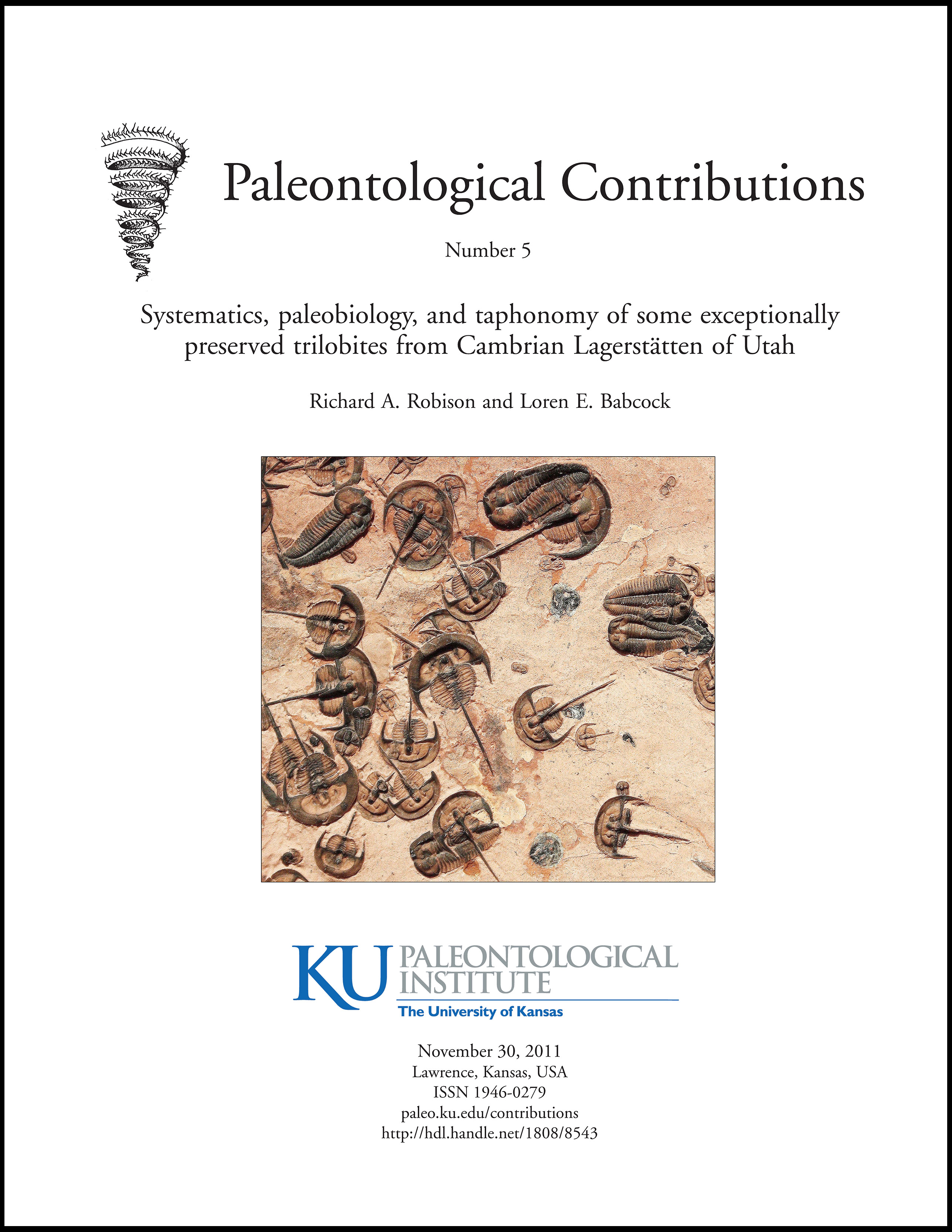Systematics, paleobiology, and taphonomy of some exceptionally preserved trilobites from Cambrian Lagerstätten of Utah
Agnostida, Asaphida, Corynexochida, Ptychopariida, taxonomy, biofilm
DOI:
https://doi.org/10.17161/PC.1808.8543Abstract
Mid-Cambrian biotas of the Spence, Wheeler, Marjum, and Weeks formations in Utah are exceptionally diverse. Continued collecting has produced additional trilobites here assigned to one new genus, Meniscopsia, and 25 new species. The new species, all known from complete or nearly complete dorsal exoskeletons, are Amecephalus jamisoni, Athabaskia gladei, Bolaspidella jarrardi, Bolaspidella reesae, Burlingia halgedahlae, Coosella kieri, Ehmaniella whitei, Glossopleura campbelli, Glossopleura yatesi, Ithycephalus stricklandi, Kootenia randolphi, Kootenia youngorum, Meniscopsia beebei, Menomonia sahratiani, Modocia comforti, Modocia kohli, Modocia whiteleyi, Norwoodia boninoi, Olenoides skabelundi, Olenoides vali, Polypleuraspis cooperi, Ptychoparella lloydi, Ptychoparella mettae, Zacanthoides liddelli, and Zacanthoides marshalli. Descriptions of two other species, Triadaspis bigeneris and Zacanthoides typicalis, are expanded to include new information from complete dorsal exoskeletons. The ventral cephalic presence of a functional rostral-hypostomal suture in the corynexochoid Zacanthoides marshalli further demonstrates that a fused rostral-hypostomal plate is not a unique defining character of the order Corynexochida, adding to evidence that the Corynexochida may be a polyphyletic taxon. The ventral cephalic presence of a median suture, associated with a rostellum in Norwoodia boninoi, order Ptychopariida, is further evidence for a polyphyletic origin of the median suture, previously cited as a unique apomorphic character defining the order Asaphida, which needs revision. The presence of a mineralized alimentary tract and digestive glands in some specimens of Meniscopsia beebei and Coosella kieri suggests that the gut was fluid filled at the time of burial and that the species were predaceous. Collapsed glabellas are interpreted as further evidence of fluid-filled gut tracts in some of the new species. Many of the articulated trilobites preserved in mid-Cambrian Lagerstätten of Utah were probably buried under rapidly deposited sediment clouds on a storm-prone marine shelf. Occasionally, trilobite clusters were buried. Encrustation of fully articulated individuals with calcitic cone-in-cone deposits in the Wheeler and Marjum formations is a likely consequence of concretionary-type growth within a biofilm shortly after death.
Downloads
Published
Issue
Section
License
Copyright (c) 2011 Richard A. Robison, Loren E. Babcock

This work is licensed under a Creative Commons Attribution 4.0 International License.
- Authors retain copyright and the works are licensed under a Creative Commons Attribution 4.0 License that allows others to share the work with an acknowledgement of the work's authorship and initial publication in this journal.
- Authors are permitted and encouraged to post their work online (e.g., in institutional repositories or on their website) prior to and during the submission process, as it can lead to productive exchanges, as well as earlier and greater citation of published work (See The Effect of Open Access)


